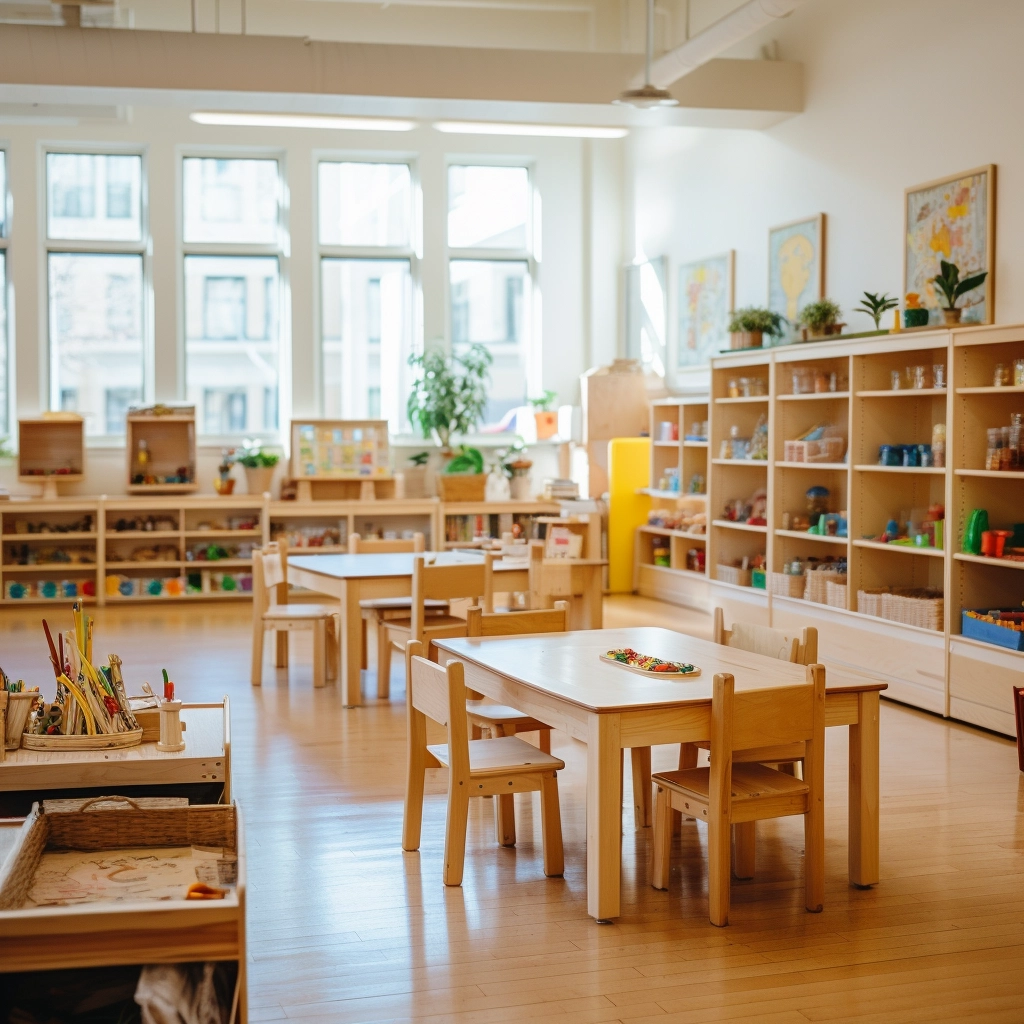Are your preschool transitions a struggle, with kids running wild and losing focus? Do you find it challenging to balance play, learning, and rest in a way that works? Are you looking for a solution that can bring structure and calm to your classroom while still engaging your students?
A well-designed preschool schedule is the foundation of a successful classroom. It’s not just about filling time slots—it’s about creating a predictable, balanced routine that supports child development. When done right, a preschool schedule helps children thrive by promoting emotional security, encouraging independence, and fostering focus. By setting clear expectations, you empower children to take ownership of their learning, reduce stress during transitions, and maximize their time in both structured activities and free play.
Let’s build a schedule that works, one that benefits both you and the children in your care.

What Is a Daily Schedule in Preschool?
A preschool schedule is a structured plan that outlines how a child’s day unfolds in a preschool classroom. It includes time blocks for learning, play, meals, rest, and transitions. This daily routine helps young children know what to expect, reducing anxiety and supporting emotional security.
A consistent daily preschool schedule balances guided instruction and free play. It might start with arrival and circle time, move into learning centers, followed by outdoor activities, snack time, nap, and storytime. This rhythm supports focus, independence, and smoother transitions throughout the day.
Whether in a homeschool preschool schedule or a full-day childcare center, a predictable structure supports both educators and children. It lays the foundation for time management, cooperation, and early learning success.
Understanding the Importance of a Preschool Daily Schedule
1. Builds Emotional Security for Children
Children need predictability to feel safe. A clear preschool schedule lets them know what’s coming next, such as play, snack, nap, or story time. This reduces anxiety, helps them feel in control, and builds trust in the classroom environment. When children feel secure, they’re more open to learning and engaging with others.
2. Supports Classroom Management
For teachers, a structured daily preschool schedule prevents chaos. When time blocks are well-defined, transitions like cleanup or center time become smoother. This reduces behavioral issues and lets teachers focus more on guiding development than solving conflicts. A predictable routine keeps the classroom calm and productive.
3. Enhances Learning Outcome
Each part of the schedule serves a learning purpose, including fine motor skills during crafts, language development during story time, or social skills during group play. A consistent routine helps maximize these learning opportunities. Whether in a daycare schedule or a pre-k homeschool curriculum, structure directly improves learning results.
4. Increases Parent and Staff Satisfaction
Parents trust programs with organized routines. When parents see their child thriving in a structured environment, their confidence in the preschool rises. At the same time, staff members benefit from clearer expectations and fewer surprises during the day, resulting in higher job satisfaction and performance.

How to Create a Structured Preschool Schedule
1. Define Your Time Blocks
Start by dividing the day into logical segments based on your program hours. Typical time blocks include: arrival, circle time, activity centers, outdoor play, meals, naps, and dismissal. Whether you’re setting up a full-day preschool schedule or a half-day program, consistent time slots are the backbone. Use 15–30 minute intervals for younger kids, and stretch to 45 minutes for older preschoolers.
2. Balance Active and Quiet Periods
Children need both movement and downtime. A solid preschool daily schedule alternates between high-energy and quiet activities, such as active play followed by story time or table work. This rhythm prevents overstimulation and helps children stay engaged. If you are creating a homeschool preschool schedule, this balance is even more important since the natural structure of a center-based setting is absent.
3. Include Transition Time
One of the most overlooked parts of schedule planning is buffer time between activities. Young children need help adjusting between tasks. Allocate 5–10 minutes for transitions, especially between high-energy and focused activities. Use music, songs, or visual cues to guide children smoothly and predictably, an approach commonly used in preschool visual schedules.
4. Consider Age and Developmental Needs
A 3-year-old preschool schedule differs from a 4-year-old preschool schedule. Younger children need more breaks, shorter activities, and longer nap periods. Older kids benefit from longer work cycles and more structured learning. Tailor your schedule to the specific needs of your group, and be prepared to adjust based on observations.
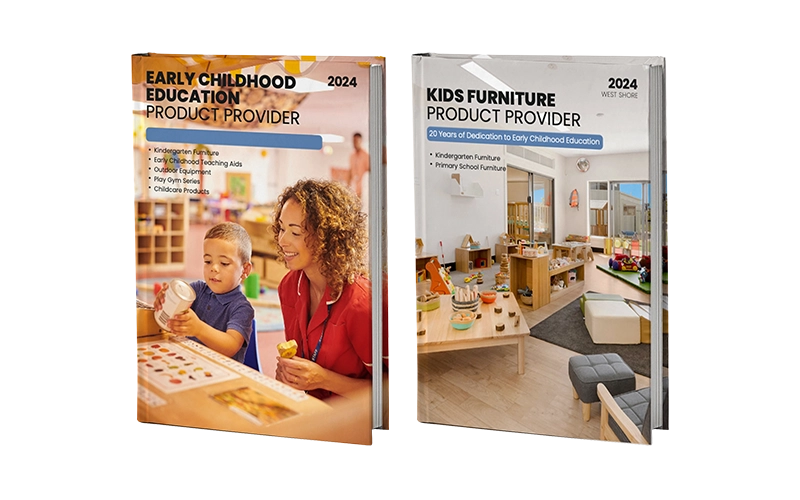
Sample Activities for a Preschool Daily Schedule
1. Circle Time
Circle time activities usually kick off the day. It includes songs, greetings, the weather report, and a look at the calendar. This short, structured meeting fosters language development and builds community. For many kids, this is their favorite part of the preschool daily schedule because it sets a warm, predictable tone.


2. Learning Centers
Learning centers give children hands-on experiences. These may include a math table, art station, block area, sensory table, and dramatic play zone. Each center targets specific developmental goals and can be aligned with your pre-k activities or homeschool curriculum.
3. Outdoor Play
Daily gross motor activity is non-negotiable. Whether it’s climbing, running, or playing games, outdoor play helps children release energy, develop coordination, and learn social rules. This activity fits naturally into any preschool classroom schedule, often in the mid-morning or afternoon.

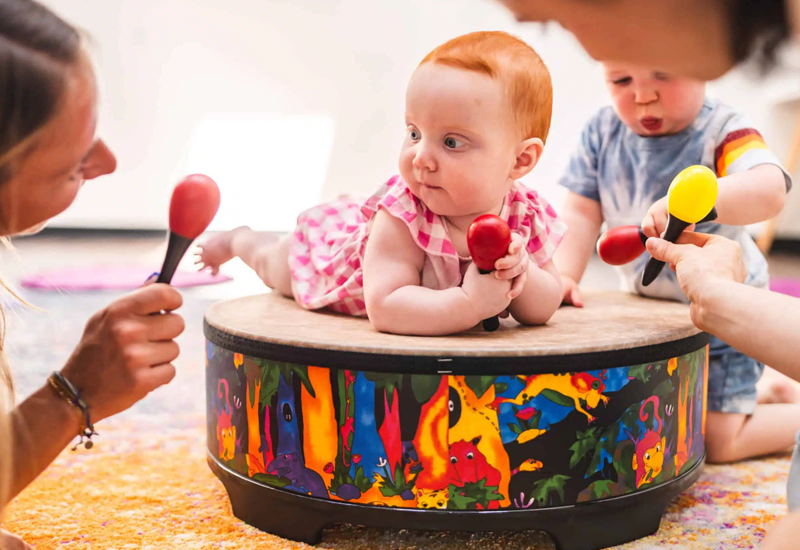
4. Story Time and Music
Story time encourages imagination, vocabulary growth, and listening skills. Music promotes rhythm, memory, and joy. These quiet, engaging moments balance the louder parts of the day, helping children transition into calmer activities like snack or nap time.
5. Tabletop Activities
Fine motor tasks such as cutting, drawing, puzzles, or beading can be scheduled during quieter parts of the day. These activities help children build concentration and control, making them ideal for midday or post-nap time blocks in a structured childcare schedule.

Sample Schedules
A well-crafted preschool schedule ensures that time is used effectively and consistently each day. Whether you’re running a full-day center, a half-day preschool program, or a homeschool setting, having a predictable routine enhances learning and eases transitions for both children and educators.
Here are three typical sample preschool classroom schedules tailored to different types of preschool environments:
Full-Day Preschool Schedule (8:00 AM – 4:00 PM)
| Time | Activity |
|---|---|
| 8:00 – 8:30 | Arrival & Free Play |
| 8:30 – 9:00 | Circle Time / Morning Meeting |
| 9:00 – 10:00 | Learning Centers / Small Group |
| 10:00 – 10:30 | Snack Break |
| 10:30 – 11:30 | Outdoor Play / Gross Motor |
| 11:30 – 12:00 | Story Time / Music & Movement |
| 12:00 – 1:30 | Lunch & Nap Time |
| 1:30 – 2:00 | Tabletop / Fine Motor Activities |
| 2:00 – 3:00 | STEM / Art / Sensory Play |
| 3:00 – 3:30 | Snack & Cleanup |
| 3:30 – 4:00 | Quiet Reading / Dismissal |
This daily preschool schedule provides a strong balance of play, learning, and rest, supporting child development throughout a full day.
2. Half-Day Preschool Schedule (8:30 AM – 12:00 PM)
| Time | Activity |
|---|---|
| 8:30 – 9:00 | Arrival & Morning Activities |
| 9:00 – 9:30 | Circle Time / Calendar Review |
| 9:30 – 10:15 | Learning Centers / Literacy Work |
| 10:15 – 10:45 | Snack & Outdoor Play |
| 10:45 – 11:30 | Music / Art / Hands-On Activities |
| 11:30 – 12:00 | Story Time & Dismissal |
This format is ideal for younger children and preschool classrooms that focus on short, focused engagement with plenty of movement.
3. Homeschool Preschool Schedule (Flexible)
| Time | Activity |
|---|---|
| 9:00 – 9:15 | Greeting & Morning Songs |
| 9:15 – 9:45 | Phonics / Early Math |
| 9:45 – 10:15 | Art / Sensory Play |
| 10:15 – 10:30 | Snack Break |
| 10:30 – 11:00 | Reading Time |
| 11:00 – 11:30 | Outdoor Exploration |
Designed for homeschool preschool schedules, this routine is flexible yet still builds the structure children need to thrive.
Free Preschool Daily Schedule Templates
Creating a visually organized and functional preschool schedule takes more than just a clock and a list. Directors, teachers, and homeschool educators need tools that are easy to edit, child-friendly, and ready to print. To save time and reduce busywork, we’ve compiled a set of free preschool daily schedule templates that can help simplify your day-to-day planning.
Whether you’re managing a full classroom or setting up a homeschool preschool schedule, these templates allow you to plug in your time blocks and activities while keeping everything consistent and professional. Use them for full-day programs, half-day sessions, or even seasonal adjustments like your preschool summer schedule.
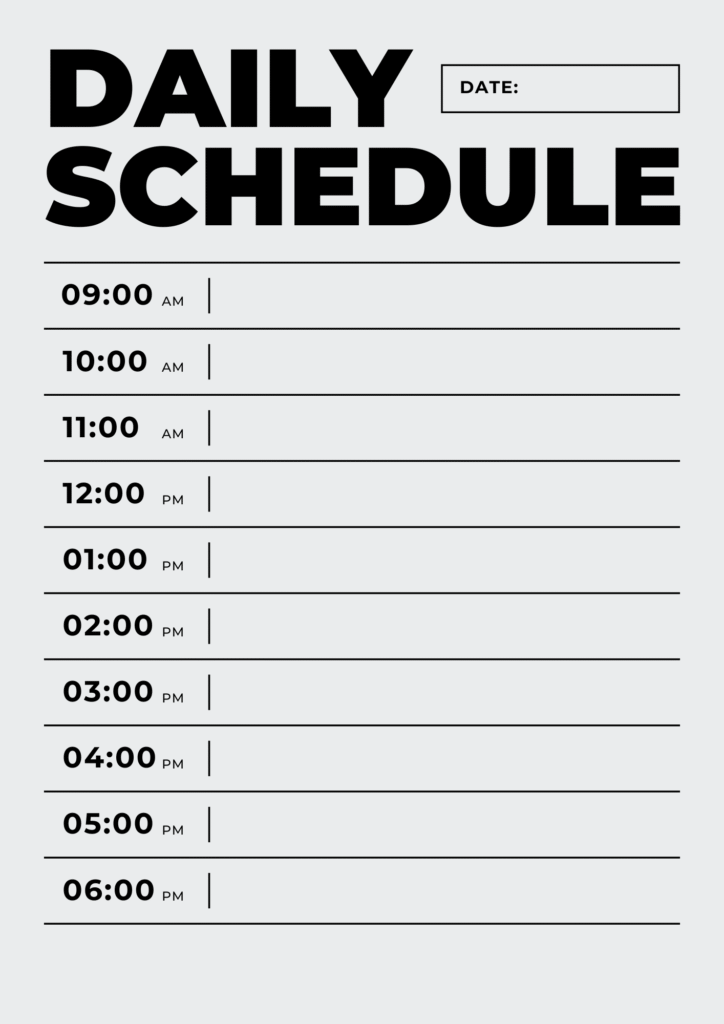
And if you’re looking for even more template styles, Canva offers customizable preschool schedule templates that can be edited online with ease. This option is perfect for educators who want a more visual and design-friendly format.
Importance of Including Nap and Snack Times in the Schedule
Nap time and snack breaks are not just routine pauses in a preschool schedule. They are essential building blocks for a successful day. These “non-academic” moments play a major role in helping children reset, refuel, and return to learning with focus and calm.

1. Why Nap Time Matters
Preschoolers need rest to support brain development and emotional regulation. Without a dedicated nap or quiet time block, children become overtired and overstimulated, leading to behavior issues and decreased learning ability. A typical preschool daily schedule for 3- to 4-year-olds includes 60–90 minutes for rest after lunch, which is also a valuable planning window for staff.
2. Snack Breaks Are Learning Moments
Snack times support more than nutrition. These breaks help children develop social skills like sharing, waiting their turn, and cleaning up. They also offer a chance for teachers to reinforce healthy eating habits and teach independence (e.g., washing hands, opening containers). In both daycare schedules and homeschool preschool routines, snack time anchors the day and creates natural transitions between activities.
3. Timing Is Everything
When nap and snack times are placed consistently within the daily preschool schedule, they help structure the rest of the day. Children begin to anticipate these breaks, which reduces stress and improves self-regulation. A well-timed snack can even prevent meltdowns during transitions or long learning blocks.
The Role of Visual Schedules in Preschool Classrooms
A visual preschool schedule is one of the most effective tools in early childhood education. Rather than depending solely on verbal directions, it uses images, icons, or tangible objects to illustrate what comes next in the day. This added clarity provides structure, reduces anxiety, and fosters independence, making it especially valuable in a busy preschool classroom setting.
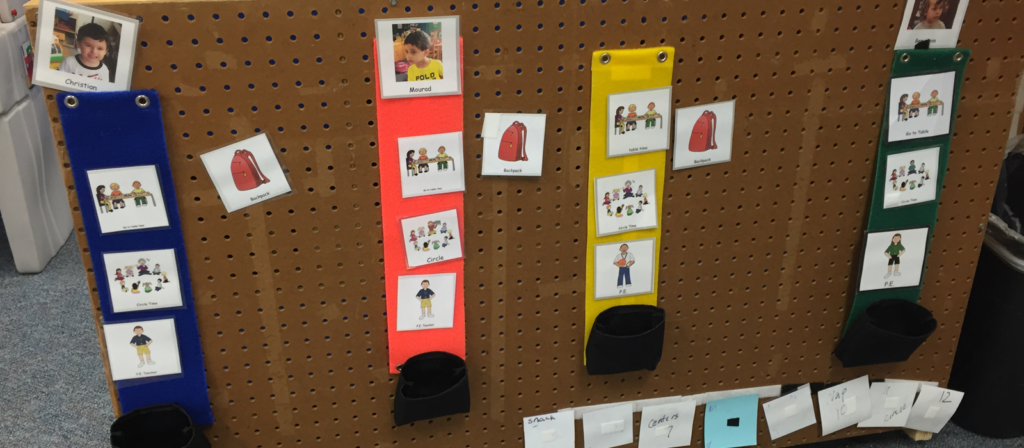
1. Supporting Comprehension and Routine
Many preschoolers can’t yet read, but they can recognize pictures. A visual schedule shows them the flow of the day: arrival, snack, circle time, play, lunch, nap, and dismissal. When children can “see” their day, they are more likely to understand and cooperate with transitions, especially during high-activity moments like clean-up or outdoor time.
2. Reducing Anxiety and Behavior Issues
Uncertainty often leads to resistance or meltdowns. A consistent visual preschool schedule makes daily expectations predictable. When children clearly understand what comes next, they feel safer and more at ease, while teachers spend less time managing disruptions. This approach is especially valuable in classrooms with children who have sensory sensitivities or learning differences.
3. Encouraging Independence
Visual schedules give children a sense of ownership. As they follow the pictures, they learn to self-direct and build time awareness. Many centers use moveable icons (like Velcro or magnet boards), allowing kids to check off completed tasks or see real-time updates. It’s a small shift that promotes big developmental wins.
Ready to design a space that inspires learning? Connect with us to create customized furniture solutions tailored to your classroom needs.
How Visual Cues Help Children Navigate Daily Routines
Visual cues are more than just classroom decorations. They are essential elements of an effective preschool schedule. They help young children process information faster, stay focused, and move confidently from one task to the next. In environments where verbal directions alone may not be enough, visuals serve as a universal language.
1. Simplifying Transitions
Transitions can be difficult, especially for children who struggle with change or need more time to process. Visual cues such as icons, pictures, or color-coded charts clearly show what is happening now and what will happen next. This reduces resistance, shortens transition times, and makes the day feel more manageable whether in a preschool center or a homeschool preschool schedule.
2. Reinforcing Expectations
Visuals also reinforce classroom rules and daily structure. For example, a picture of children sitting cross-legged may indicate “circle time,” while a snack symbol shows it’s time for a break. These reminders help children associate behaviors with activities and build routine-based habits.
3. Supporting Language and Memory Development
For young learners, especially English language learners or children with developmental delays, visual aids support comprehension and memory. When paired with spoken instructions, visual cues help bridge the gap and reinforce vocabulary tied to the preschool classroom schedule.
Implementing Visual Schedules for Play and Learning Activities
Integrating visual schedules into both structured learning and free play isn’t just helpful; it’s critical for maintaining flow in a preschool schedule. These visuals bridge the gap between adult expectations and a child’s understanding, especially when the classroom transitions between different activity types.
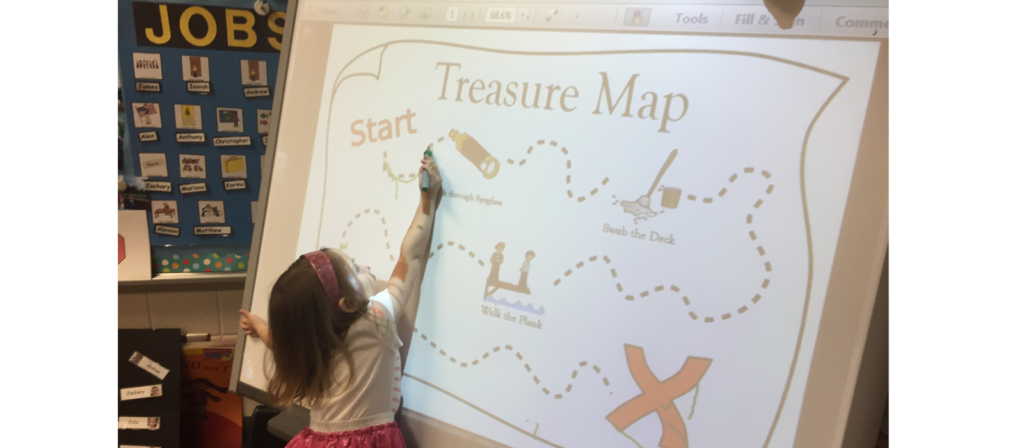
1. Structuring Free Play with Purpose
Free play doesn’t mean chaos. By using icons or picture cards that represent different centers, such as blocks, art, reading, or dramatic play, children can choose their activities while still following structure. Displaying these visuals near each area helps children understand where they can go and what they can do, creating a self-regulated flow within the preschool classroom.
2. Visuals During Academic Blocks
When used during teacher-led activities such as phonics, science, or math time, visual schedules help children stay engaged. For example, a schedule showing “circle time, hands-on activity, story” allows children to anticipate the sequence and remain focused. This is especially useful in pre-k at home curriculum or centers where attention spans vary widely.
3. Flexibility with Visual Formats
Visuals can be implemented using wall charts, pocket schedules, Velcro boards, or digital screens. Choose formats based on age, classroom size, and the ability to modify throughout the day. Moveable visuals give teachers flexibility to adjust the routine in real-time, helping children adapt to changes smoothly while keeping a consistent daily preschool schedule.
Enhancing Literacy Skills Through Visual Schedule Integration
While visual schedules are primarily used for structure and behavior management, they also serve as a powerful tool for early literacy development. In any preschool schedule, children are exposed to both images and words repeatedly throughout the day, creating an ideal condition for building pre-reading skills.
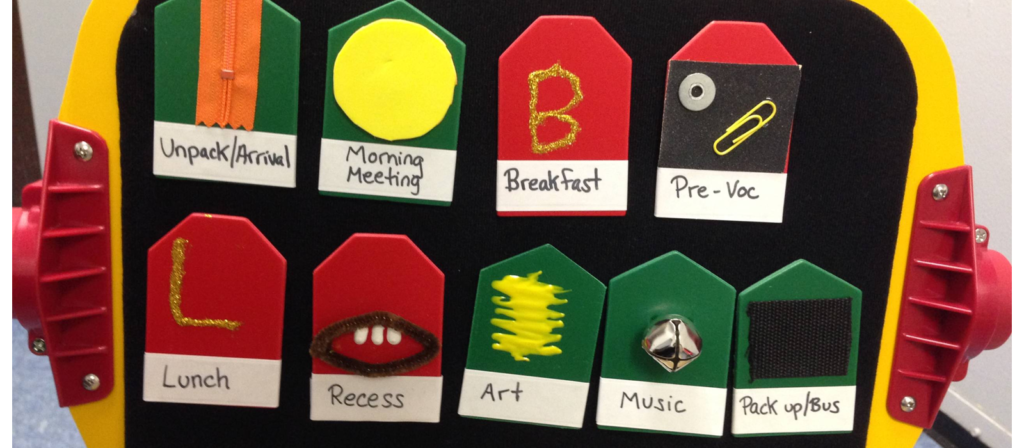
1. Building Word Recognition
Pairing text with images allows children to associate words like “snack,” “story,” and “nap” with their meanings. As these words appear consistently on the schedule each day, children begin to recognize and read them independently. Over time, the preschool daily schedule itself becomes a functional literacy tool.
2. Expanding Vocabulary Through Repetition
When children see and hear the same schedule-related words every day, they naturally expand their vocabulary. Teachers can reinforce this by pointing to words and saying them aloud during transitions. Whether you’re in a daycare schedule or a pre-k homeschool curriculum, this repetition builds foundational language skills.
3. Encouraging Environmental Print Awareness
Visual schedules introduce the concept that print carries meaning. This awareness, known as environmental print recognition, is a key early literacy milestone. Labels, icons, and written words on the classroom schedule help children connect symbols to meaning, preparing them for more advanced reading experiences.
Managing Transitions and Group Activities Effectively
Smooth transitions are essential to any successful preschool schedule. Below is a practical table that outlines common challenges and strategies to manage them effectively in both classroom and homeschool preschool settings.
| Transition | Challenges | Strategies |
|---|---|---|
| Cleanup time | Children may resist cleaning up or become distracted | Use a consistent signal (e.g., a song or chime); make cleanup a fun challenge; assign specific cleanup tasks to each child |
| Moving between activities | Children may have difficulty ending one activity and starting another | Give a 5-minute warning before the transition; use picture schedules to show what’s next; give clear, simple instructions |
| Waiting for a turn | Children may become impatient or frustrated | Provide quiet engagement tools (like books or puzzles); use visual aids to show whose turn is next; praise children for waiting patiently |
Customizing Your Preschool Daily Schedule for Maximum Engagement
Adapting your preschool schedule to meet the specific needs of each age group is essential for creating a developmentally appropriate learning environment. While the overall structure of the day may be similar across ages, the duration and type of activities must reflect the children’s developmental stages, interests, and attention spans.
1. Adapting the Schedule for Half-Day vs. Full-Day Preschool Programs
When creating a preschool daily schedule, it’s important to account for whether the program is half-day or full-day. Here’s a quick breakdown of what these schedules might look like:
| Program Type | Focus | Sample Schedule |
|---|---|---|
| Half-Day Programs | Focus on balance: structured learning, free play, and outdoor time | Arrival & Welcome, Circle Time, Small-Group Activities, Snack Time, Outdoor Play, Story Time & Closing Circle |
| Full-Day Programs | More flexibility: longer periods of play, rest, and enrichment activities | Arrival & Free Play, Morning Circle, Learning Centers, Outdoor Play, Lunch & Rest Time, Afternoon Snack & Free Play, Enrichment Activities, Closing Circle & Departure |
2. Age-Specific Preschool Daily Schedules
Preschool schedules need to align with the unique developmental needs of children. Below is a table that shows how schedules might vary based on the age group:
| Age Group | Focus Areas | Activity Considerations |
|---|---|---|
| 3-Year-Olds | Shorter attention spans, frequent transitions, and more structured activities | Longer attention spans, extended free play, and more complex learning activities |
| 4-Year-Olds | Developing self-help skills, enhancing language, and encouraging social interaction | Social-emotional development, cognitive growth, and physical coordination |
| Preschoolers (3-5) | Social-emotional development, cognitive growth, physical coordination | Balance of structured/unstructured activities, opportunities for choice, adequate rest & nutrition |
3. Sample Daily Schedules by Age Group
Here’s a closer look at what a preschool schedule might look like for both 3-year-olds, 4-year-olds, and 5-year-olds:
3-Year-Old Daily Schedule
| Time | Activity |
|---|---|
| 8:00–8:30 a.m. | Arrival & Free Play |
| 8:30–9:00 a.m. | Circle Time |
| 9:00–9:30 a.m. | Small-Group Activities |
| 9:30–10:00 a.m. | Snack Time |
| 10:00–10:30 a.m. | Outdoor Play |
| 10:30–11:00 a.m. | Story Time & Music |
| 11:00–11:30 a.m. | Art Activity |
| 11:30 a.m.–12:00 p.m. | Lunch & Departure |
4-Year-Old Daily Schedule
| Time | Activity |
|---|---|
| 8:00–8:30 a.m. | Arrival & Free Play |
| 8:30–9:00 a.m. | Morning Meeting |
| 9:00–10:00 a.m. | Learning Centers |
| 10:00–10:30 a.m. | Snack & Story Time |
| 10:30–11:15 a.m. | Outdoor Play |
| 11:15 a.m.–12:00 p.m. | Small-Group Activities |
| 12:00–12:45 p.m. | Lunch & Quiet Activities |
| 12:45–1:15 p.m. | Rest Time |
| 1:15–1:45 p.m. | Science or Math Activity |
| 1:45–2:15 p.m. | Art or Music Activity |
| 2:15–2:45 p.m. | Closing Circle & Free Play |
| 2:45–3:00 p.m. | Departure |
5-Year-Old Daily Schedule
| Time | Activity |
|---|---|
| 8:00–8:30 a.m. | Arrival & Free Play |
| 8:30–9:00 a.m. | Morning Meeting & Calendar |
| 9:00–10:00 a.m. | Learning Centers (Literacy, Math) |
| 10:00–10:30 a.m. | Snack & Story Time |
| 10:30–11:15 a.m. | Outdoor Play (Gross Motor Activities) |
| 11:15 a.m.–12:00 p.m. | Small-Group Activities |
| 12:00–12:45 p.m. | Lunch & Quiet Time |
| 12:45–1:15 p.m. | Rest Time |
| 1:15–1:45 p.m. | Science or STEM Activity |
| 1:45–2:15 p.m. | Art, Music, or Creative Play |
| 2:15–2:45 p.m. | Closing Circle & Free Play |
| 2:45–3:00 p.m. | Departure |
4. Outdoor Play One Day Schedule for Preschoolers
| Time | Activity |
|---|---|
| 9:30–10:00 a.m. | Free Play (Exploring, Climbing, Running) |
| 10:00–10:30 a.m. | Group Games (Tag, Duck Duck Goose) |
| 10:30–11:00 a.m. | Obstacle Course (Balance, Coordination) |
| 11:00–11:30 a.m. | Nature Walk (Exploring Natural Elements) |
| 1:00–1:30 p.m. | Cooperative Play (Building with Blocks) |
| 1:30–2:00 p.m. | Ball Games (Throwing, Catching, Kicking) |
| 2:00–2:30 p.m. | Sandbox Play (Digging, Sand Sculptures) |
Detailed Descriptions:
- Free Play (9:30–9:50 a.m.):
During this time, children are free to explore the outdoor environment, engage in imaginative play, or use equipment like swings and slides. This allows for independent exploration and fosters creativity. Activities like climbing, running, and jumping will help children build gross motor skills and coordination. - Group Games (9:50–10:00 a.m.):
Games like Tag or Duck Duck Goose promote social interaction and teamwork. They also teach children how to follow rules and take turns while staying active. These games are perfect for improving agility and listening skills. - Rest Break (10:00–10:15 a.m.):
After some energetic outdoor play, children need a brief rest period to rehydrate and relax. During this time, children can take a moment to sit, have a drink, and prepare for the next activity. This break helps them recharge before the next round of play. - Ball Games (10:15–10:30 a.m.):
Activities such as throwing, catching, and kicking a ball promote hand-eye coordination and physical fitness. These games also encourage children to work together as they pass the ball and learn about fair play and cooperation. - Cooperative Play (1:00–1:20 p.m.):
During this time, children engage in more focused, creative play such as building with blocks or making sandcastles. These activities help with fine motor skills and problem-solving. It’s also a great time for children to practice sharing and working together. - Closing Play (1:20–1:30 p.m.):
The final playtime is more relaxed, with gentle activities like walking or simple stretching. This helps children wind down and transition smoothly back to indoor activities. These calming activities also promote balance and self-regulation.
5. Customizing Your Preschool Schedule for Maximum Engagement
By personalizing your preschool schedule according to age and program length, you can create a more engaging and developmentally appropriate environment. Each group of children benefits from a schedule that respects their developmental milestones, promotes independence, and provides a healthy balance of structured learning, play, and rest.
FAQs
1. What is the best way to manage the daily program in a preschool classroom?
The best way to manage a preschool schedule is by maintaining a balanced routine that includes structured learning, free play, outdoor activities, and rest. Clear transitions and visual schedules can help children understand what to expect next, reducing anxiety and increasing participation. By adjusting activities to the developmental needs of the children, you create an engaging and supportive learning environment.
2. What are the routines for preschool classrooms?
A typical preschool classroom schedule includes a balance of academic and play activities. Common components are:
- Circle time for greetings and calendar activities
- Learning centers with small-group activities
- Snack and outdoor play to promote physical development
- Story time and quiet activities for winding down
- Rest or nap time for younger children
The key to a successful typical preschool classroom schedule is maintaining predictable routines while allowing flexibility to meet children’s individual needs. Smooth transitions and consistency help create a secure, engaging environment for every child.
3. What are 5 components of a good early learning environment?
A good early learning environment includes:
- A structured schedule (a clear preschool schedule)
- Safe and comfortable furniture designed for young learners
- Interactive learning activities to stimulate cognitive development
- Outdoor play spaces for gross motor development
- A warm, welcoming atmosphere that supports emotional and social growth
These components work together to create a space where children feel secure, engaged, and ready to learn.
4. What is a developmentally appropriate daily schedule?
A developmentally appropriate daily schedule is one that meets the individual needs of children at their specific age and stage of development. For preschoolers, this means incorporating a variety of activities that support cognitive, social, emotional, and physical growth. A well-balanced preschool schedule includes short, engaging activities with ample time for rest, play, and exploration. Flexibility is key to adapting to the needs of each child.
5. How long is the average preschool day?
The average preschool day typically lasts between 3 to 6 hours. Half-day programs usually run for 3-4 hours, while full-day programs can extend up to 8 hours. The duration of the day should be balanced with breaks, snacks, and rest time, ensuring that children remain engaged without becoming overstimulated.

Conclusion
To sum up, a well-planned preschool schedule is essential for balancing structured learning and play, promoting emotional development, and fostering independence. Whether you’re managing a half-day preschool schedule or a full-day program, ensuring consistency with flexibility helps children thrive while keeping classroom management smooth.
Tailoring the schedule to age-specific needs, such as incorporating preschool visual schedules, can greatly enhance transitions and engagement. Moreover, having the right preschool furniture that suits the needs of young learners further supports an efficient and comfortable learning environment. West Shore Furniture understands this, providing furniture designed to fit perfectly within the routines and activities outlined in any preschool schedule, ensuring both functionality and comfort for children and educators alike.





